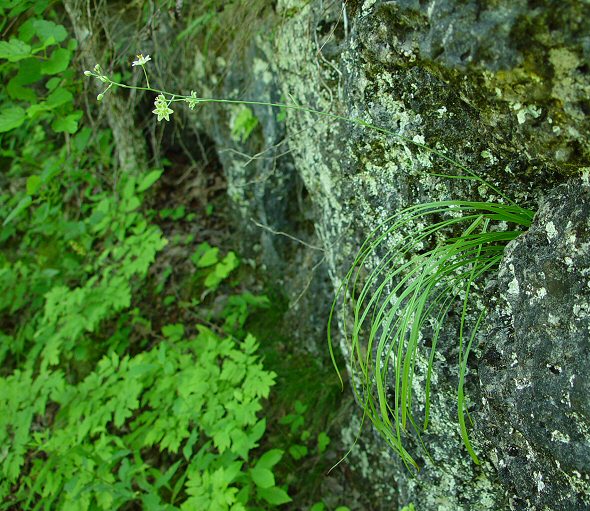Zigadenus elegans Pursh
White Camas

Native
CC = 10
CW = 0
MOC = 4
© DETenaglia
Zigadenus elegans PurshWhite Camas | |
 |
Native CC = 10 CW = 0 MOC = 4 |
© DETenaglia |
|
Family - Liliaceae Habit - Perennial forb with bulbs, often somewhat glaucous, lacking Allium odor. Stems - Arching to erect, to 60 cm, unbranched below the inflorescence, glabrous. Leaves - Mostly basal, numerous, glabrous, those on the aerial stems greatly reduced and mostly bractlike, the basal leaves 10-50 cm long, linear, flat or more often folded longitudinally in the lower half.
Inflorescence - Terminal racemes or panicles of perfect and/or functionally unisexual flowers.
Flowers - Flowers with stalks 5-30 mm long, subtended by small bracts, none of them replaced by bulblets. Perianth spreading, the sepals and petals 6-12 mm long, fused to the base of the ovary, obovate to narrowly elliptic or lanceolate, not narrowed to short, stalklike bases, white, creamy white, or greenish white, sometimes purplish tinged, turning green after flowering, each with a green, 2-lobed gland on the inner surface near the base. Stamens 6, usually fused to the base of the perianth. Styles 3, each with a small stigma. Ovary superior, with 3 locules, each with 4-10 ovules.
Fruits - Capsules 10-18 mm long, ovoid, deeply 3-lobed, the lobes beaked with the persistent styles. Flowering - June - August. Habitat - Crevices and ledges of north-facing dolomite bluffs. Origin - Native to U.S. Lookalikes - None close. Other info. - This attractive species has only been found in 4 Ozark counties in Missouri. The plant is a glacial relict which has remained after the retreat of the last Pleistocene ice sheets. It survives only in the shaded, north-facing dolomite bluffs in southern Missouri.
Photographs taken along the Jack's Fork River, Shannon County, MO., 6-22-03 (DETenaglia). |